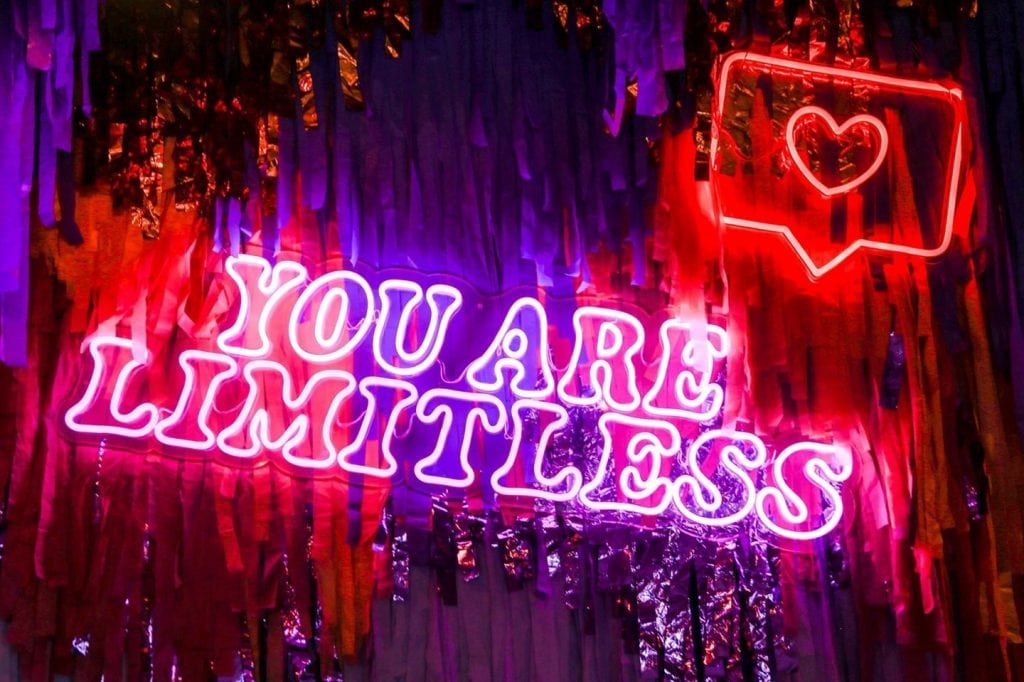Neon and other gases have long been the standard in the construction of signs. In our minds' eye, a sign is most often a casino advertisement. Despite the unmistakable charm and nostalgia of neon signs, the many benefits of LED lights make them the superior financial investment for any business.
If you care about the environment or just want to save money on repairs, an LED sign is a great choice.
What is the current status of the neon sign?
While neon signs have been popular in nightclubs and retro-themed establishments for a number of years, it wasn't until recently that they began to see widespread use outside of those settings. They were so well-liked because of how much attention they drew to themselves whenever they were in view.
Neon signs are instantly recognisable due to their vivid colours and dazzling luminosity, so you've undoubtedly seen a few of them in your day.
In the modern era, however, such sights are exceedingly rare. This leads to the following enquiries: So why, exactly, is today the day when such a prominent and well-liked sign is being taken down? The use of neon signage to advertise stores has fallen out of favour; why is this so?
Is it true that the neon on the signs is being changed out? Yes. Conspicuous among these developments is the transition from neon to LED lighting, which is indicative of the accelerating pace of advancement in physical lettering. But what factors will primarily contribute to this shift?
The LED has since replaced the incandescent as the prefered option. If you want to know why LEDs have replaced neon, keep reading!
Regular Operating Expenses - Power Consumption
The fact that LED lights have a cheaper operating cost than neon lights is probably the biggest selling point for them. It takes anything from 3 kv to 18 kv to light a neon light, but LED signs only need 24 V to 120 V.

The expense of maintaining the neon sign is higher because it uses more than five times as much energy to light up. An LED sign's initial investment may be similar to that of a conventional sign, but its ongoing operating costs will be far lower.
Maintenance Charges
LED lights' low maintenance costs are another way they save money. The average lifespan of a traditional neon light is around 10,000 hours. That means you'll need to include in a schedule for replacing the bulbs depending on how often people are using the sign. You won't have to replace your lights nearly as often if you go to LED because their lifespan is three times longer. They are also cheaper to replace than the alternatives because you can do it yourself without risking injury.
Maintenance of LED signs is simplified by their use of individual, robust bulbs, which eliminates the need to touch any hot parts. LED signage may be easily cleaned with a moist cloth whether they are on or off. Before cleaning, neon signs must be turned off and allowed to cool. As a result, you can expose it to the public without fear of harm, and it won't break or cause any harm even if it drops.
In addition, LED signage requires almost no upkeep. The neon gas inside neon signs' glass tubes depletes over time, necessitating replacement by a professional neon sign manufacturer or the purchase of new signage.
This may take up to a decade, but in the interim, your old signs will gradually lose their brightness. Your customized neon sign can be used outside without fear of water damage when illuminated with LED bulbs, which also have a longer lifespan and are less susceptible to the effects of the weather.
Brighter Signages
Neon lights are attractive because they give out a warm, comforting light. The nostalgic benefit comes at the cost of the sign becoming less noticeable in its new environment. LED lights shine brighter at night, making the letters easier to see. If consumers are able to locate your company with greater ease, you will receive more attention.
More Environmentally Friendly
LED lights are more eco-friendly than neon lights since they last longer and consume less electricity. If your sign can last for a long time without needing to be replaced, that's great news for both the planet and your wallet.
Assisting with environmental protection and other people's safety is crucial. For this reason, going for an environmentally friendly lamp is the smart move. Neon lights are more likely to cause environmental damage because they contain various gases inside of glass tubes. Because of this, it is necessary to get rid of broken lights of this type.
It's important to properly dispose of them so that no one gets hurt and no dangerous gases are released into the atmosphere. With LED neon lights, however, you need not worry about harming the environment. The fact that they are gas-free and gentler on the environment is a big factor. The fact that these bulbs can be recycled is a major plus for their environmental friendliness.
A Longer-Lasting Lighting Solution
There is a high risk of breaking a neon light. It is recommended that a specialist be hired to perform the replacement. It's important to be cautious even when transporting the sign, as breaking the lights could result in its being rendered useless. LED lights are much more sturdy, so if you drop one, you can just pick it up and keep working.
Versatility
Consideration of how the technology can be put to use in a variety of contexts and fields is also crucial. You can use this information to zero in on the perfect lamp for your situation.
Signage is the ideal application for neon lights. People like them because of the pleasing flickering effect they provide when turned on. Of course, this is only relevant for flashing enthusiasts.
For others, the ideal form of signage would be one that is both constant and unobtrusive. LED neon lights are perfect for this application. LED neon lights are versatile and can be utilised in a variety of applications. For this reason, they are the best choice for a wide range of applications.
Safety
This is due to the tubing used to power neon signs is typically constructed of glass, adding to the signs' already fragile nature. In part, the mercury within them is responsible for the gentle neon light they emit. There are some concerns, but they are the same as with regular fluorescent lights. LED bulbs, in contrast, are made entirely of non-toxic components. As an added bonus, they won't need any additional treatment before or after disposal.
How to Switch from Neon to Flexible LED Neon
You might well have noticed that your neon sign is flashing or that big sections of it are still dark since we changed the clocks back. You should convert to a more cost-effective solution that is so simple to set up that you can do it yourself before you have to spend a lot of money on repairing your old technology.
Rope lighting made from LED neon tubes is flexible and available in a wide range of colours. You can make unique letters with it, install it along the exterior of the building, or even use it as decorative lighting within your home. Keep reading to find out how much simpler it is to install neon rope light than glass neon.
LED Neon Signs Are Three Times More Durable
Although glass neon only has a lifespan of about 10,000 hours and is more easily broken, these flexible neon rope lights have a rating of up to 30,000 hours. Superior flame retardant PVC is used in the manufacturing of flexible LED neon rope lights. It has been tested and approved by the Underwriters Laboratories for use in outdoor settings, and it can resist extreme temperatures and humidity without shattering like traditional glass neon signs.
Neon Signs That Are Flexible Are Easier to Install
LED neon rope light is flexible and can be easily installed and repaired on your own, unlike glass neon lights that typically need to be repaired by a professional artisan.
The adaptability of LED neon rope light allows for on-the-fly alterations. Mounting clips and channel guides make it simple to form straight lines or precise curves with such a radius of up to 50 millimetres. The rope light is marked every 18 inches with a cut mark (a line on the side of a PVC jacket).
No skill with glassblowing is necessary to use these marks to divide up text, splice colours, or make bespoke lengths for your display. Instead of having to fabricate the neon sign elsewhere and then transport and install the finished glass sign, this method can be used instead.
If a portion is broken and no longer functional, a replacement can be spliced in with minimal effort to use an invisible splice kit. In comparison to waiting for specialised maintenance on a glass neon sign, this can get your company's name back in lights much more quickly.
Additionally, you have more creative freedom when using LED neon rope lights.
This rope light just requires power at one end, just like regular LED rope lights. LED neon simply needs an end cap to be finished off, while glass neon needs the whole circuit. Seeing as how the rope light operates at 120 Volts, the sign can be powered straight from the 120 VAC supply in your building.
How to Install LED Neon Rope Lights
Estimate the length of rope light you'll need and then cut it to size. In order to power more than 150 feet of 120V neon rope light, additional power supply will be required. PVC insulation features premarked cut lines at regular intervals of 18 inches.
If you cut outside of the lines, the circuit won't work properly.
If you need to join two different colours into one, simply snip at the cut line and join with a power pin. Heat the segment of the shrink tube until it seals the connection, then slide it over the connector. If you need a tight curve, don't use these pins to build a connection.
Cover the end of the rope light that is not attached to the power supply with an end cap, and keep the adapter in a safe place. Mount the rope light by inserting it gently into the mounting clips or grooves until you hear a click.
Cautionary Measures for the Setup Process
- The only way you can bend LED neon rope light is against a flat surface. Though it can be bent with a small radius from side to side, the LEDs inside the rope light could be damaged if you twisted or bent it in such a way that the top or rear of a rope light was bent. Similarly, it shouldn't be hung without support or mounted on gates or doors, where it would be subjected to constant bending and swinging.
- Rope lights should not be turned on while the spool is in motion. Although LEDs generate less heat than some competing technologies, when coiled tightly, that heat is unable to escape and can spark a fire in the PVC sheath.
- Keep at least a half an inch of space between parallel runs. Since the rope light's lifespan could be shortened by overheating, this is a potential problem.
- You must not put the rope light in water. Underwater tape lighting is a great alternative to traditional pool liners. Light-emitting diode (LED) flexible neon rope light is only water-resistant to a certain depth, so it won't work if you
An Excellent Investment for Any Business
Save money without sacrificing creativity or eye-catching design by switching to LED neon signs. Adaptability and exposure can be maintained at reduced advertising expenses.
When compared to neon signs, LED has both immediate and long-term advantages, as discussed below.
LED signs produced by experts are more memorable because of their crispness and originality. In terms of attracting customers as they go by, LED signages are a tried and true method.
Conclusion
No longer are neon signs commonly used for commercial purposes. The rapid evolution of physical lettering is reflected in the industry's shift from neon to LED lighting. For quite some time, neon signs have been a staple of bars and restaurants with a vintage vibe.

However, an LED sign can last for three times as long, with a lifespan of 30,000 hours compared to the average neon sign's lifespan of 10,000 hours. LED signs are easier to keep up because their individual bulbs are more durable.
When compared to neon signs, LEDs have a lower environmental impact due to their longer lifespan and lower electricity consumption. In comparison to other types of lighting, neon signs pose a greater threat to the environment due to the gases they use to illuminate.
Consequently, it is crucial to get rid of any such lights that have become defective. Gas-free and easier on the atmosphere, LED neon lights are the future of lighting. They're better for the planet because recycling is easy.
When replacing a neon light, it's best to have a professional do it because of how easily they can break. There is a threefold increase in the longevity of neon rope lights compared to conventional glass neon tubes.
They are adaptable and simple to set up and fix yourself, unlike glass neon lights, which typically require the services of an expert.
LED neon rope light is flexible enough to accommodate last-minute adjustments. When compared to traditional neon lights, LED Neon Rope Lights offer greater flexibility because they only need to be powered at one end.
Content Summary
- Despite the unmistakable charm and nostalgia of neon signs, the many benefits of LED lights make them the superior financial investment for any business.
- If you care about the environment or just want to save money on repairs, an LED sign is a great choice.
- While neon signs have been popular in nightclubs and retro-themed establishments for a number of years, it wasn't until recently that they began to see widespread use outside of those settings.
- The use of neon signage to advertise stores has fallen out of favour; why is this so?
- The fact that LED lights have a cheaper operating cost than neon lights is probably the biggest selling point for them.
- An LED sign's initial investment may be similar to that of a conventional sign, but its ongoing operating costs will be far lower.
- LED lights' low maintenance costs are another way they save money.
- In addition, LED signage requires almost no upkeep.
- For this reason, going for an environmentally friendly lamp is the smart move.
- Because of this, it is necessary to get rid of broken lights of this type.
- Signage is the ideal application for neon lights.
- LED neon lights are versatile and can be utilised in a variety of applications.
- Rope lighting made from LED neon tubes is flexible and available in a wide range of colours.
- Superior flame retardant PVC is used in the manufacturing of flexible LED neon rope lights.
- LED neon rope light is flexible and can be easily installed and repaired on your own, unlike glass neon lights that typically need to be repaired by a professional artisan.
- The adaptability of LED neon rope light allows for on-the-fly alterations.
- Additionally, you have more creative freedom when using LED neon rope lights.
- Estimate the length of rope light you'll need and then cut it to size.
- In order to power more than 150 feet of 120V neon rope light, additional power supply will be required.
- Cover the end of the rope light that is not attached to the power supply with an end cap, and keep the adapter in a safe place.
- The only way you can bend LED neon rope light is against a flat surface.
- You must not put the rope light in water.
- Light-emitting diode (LED) flexible neon rope light is only water-resistant to a certain depth.
- Save money without sacrificing creativity or eye-catching design by switching to LED neon signs.
FAQs About LED Lights
While the average lifespan of a neon sign is eight to fifteen years, many of them last much longer than that. A sign's lifespan can be shortened by leaving it on for extended periods of time, and it also increases the risk of overheating and electrical surge damage
Neon signs, which were common from the 1920s to the 1960s and again in the 1980s, require them to create the bright, eye-catching displays of colour that are their hallmark.
The neon glass tubes in the metal conduits are linked together by high-voltage electrical wires. When temperatures get too high, the wires powering the sign can melt, rendering it useless in whole or in part.
Believe it or not, no electricity is required here, despite the fact that many people think they must plug it in. When excited by either electricity or ultraviolet light, gas molecules release electrons, causing the gas to glow.
Neon signs are stunning to behold, but they pose a danger if they aren't regularly serviced. Injury from shattered glass, electric shock, or a fire hazard are all examples of the dangers that could arise.


















